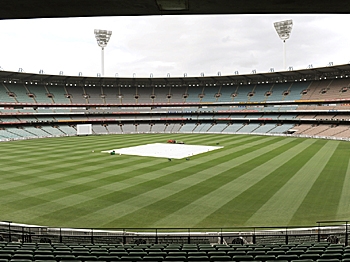Ashes 2010: Fourth Test at the MCG - Preview
Controversy builds as England and Australia prepare for the Fourth Test of the 2010 Ashes Cricket Series.

The Melbourne Cricket Ground (MCG) lies in wait for the Fourth Test in the 2010 Ashes Cricket Series. William West/AFP/Getty Images
|Updated:





